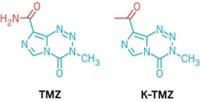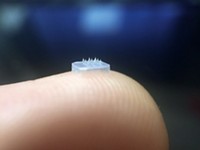Advertisement
Grab your lab coat. Let's get started
Welcome!
Welcome!
Create an account below to get 6 C&EN articles per month, receive newsletters and more - all free.
It seems this is your first time logging in online. Please enter the following information to continue.
As an ACS member you automatically get access to this site. All we need is few more details to create your reading experience.
Not you? Sign in with a different account.
Not you? Sign in with a different account.
ERROR 1
ERROR 1
ERROR 2
ERROR 2
ERROR 2
ERROR 2
ERROR 2
Password and Confirm password must match.
If you have an ACS member number, please enter it here so we can link this account to your membership. (optional)
ERROR 2
ACS values your privacy. By submitting your information, you are gaining access to C&EN and subscribing to our weekly newsletter. We use the information you provide to make your reading experience better, and we will never sell your data to third party members.
Materials
Lipophilic Drugs Delivered To The Brain Via Dendrimers
Drug Delivery: Branched polymers render the lipophilic antipsychotic drug haloperidol sufficiently soluble for intranasal administration
by Bethany Halford
August 17, 2015
| A version of this story appeared in
Volume 93, Issue 32
One of the tricks for sneaking a neurological drug past the blood-brain barrier is to make the molecule lipophilic. Although a greasy compound might slip into the brain easily, it can be tough to get a therapeutic amount of the drug to dissolve in the blood. Consequently, such drugs often are administered in high doses, which can lead to adverse effects. Researchers led by Abhay S. Chauhan of Concordia University, in Wisconsin, and Ram K. Mishra of McMaster University, in Ontario, now show that using poly(amidoamine) dendrimers as drug delivery agents, they can make the lipophilic psychiatric drug haloperidol 100 times as soluble in aqueous solution as the free compound (Mol. Pharmaceutics 2015, DOI: 10.1021/acs.molpharmaceut.5b00402). This solubility boost, which comes by trapping haloperidol molecules between the branching arms of the dendrimer, allows the researchers to deliver the drug via a nasal spray rather than by injection. They found that the intranasal dendrimer-haloperidol system elicits the same response in rats that intravenous injections do, but at a much lower concentration of the drug.





Join the conversation
Contact the reporter
Submit a Letter to the Editor for publication
Engage with us on Twitter